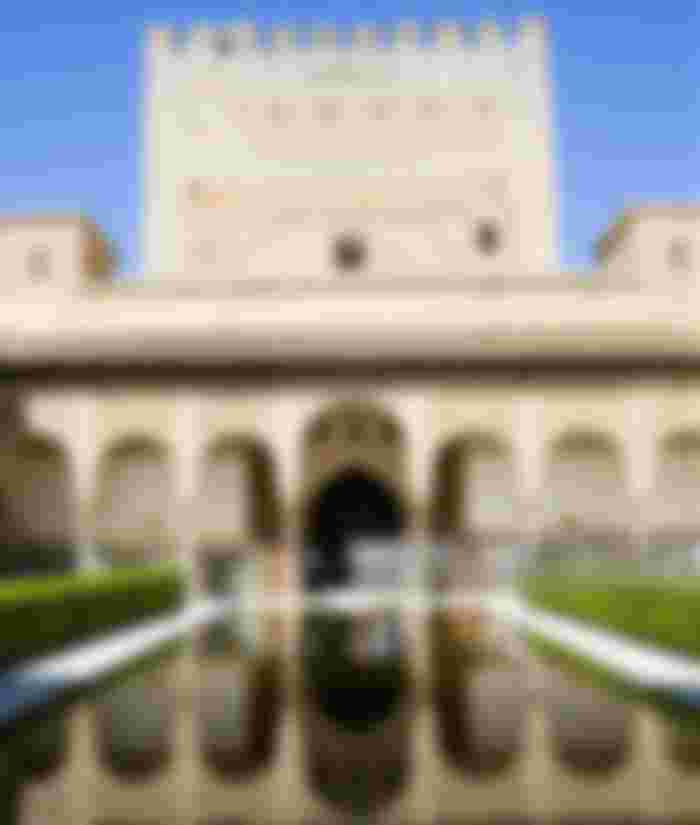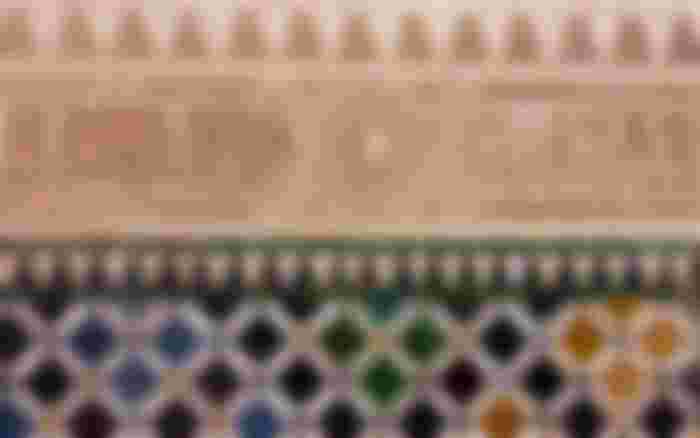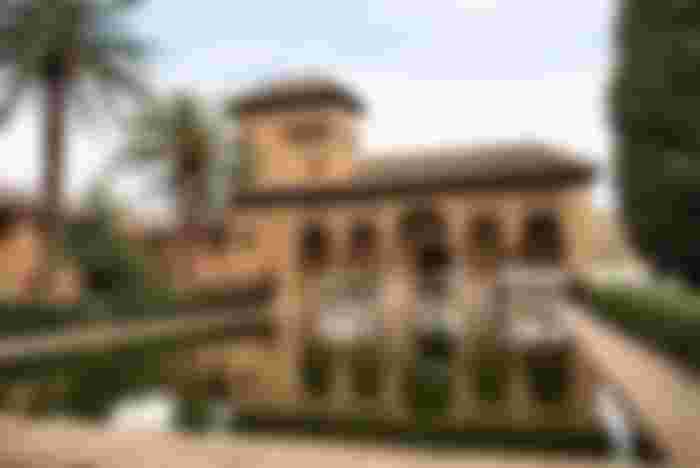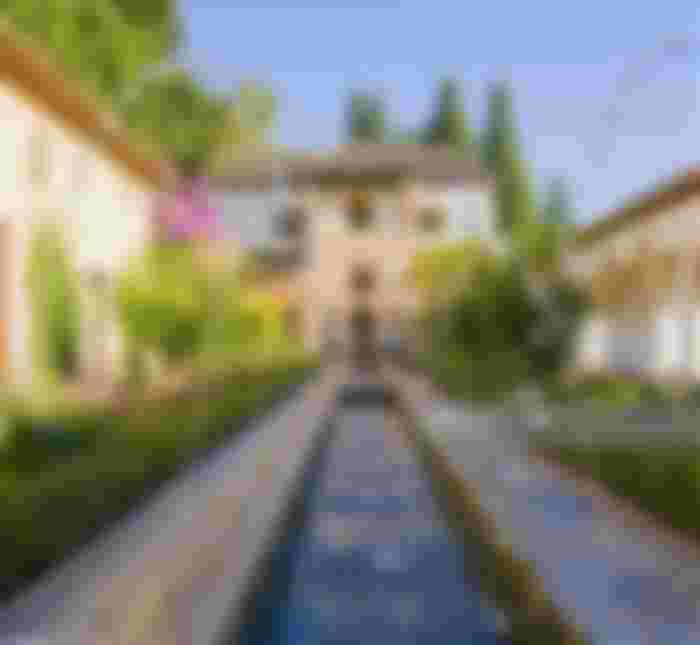Spain was ruled by the Moorish or Muslims from 1333-1492, during which time they built many Islamic establishments in Andalusia (now Spain and Portugal).
Here is a detailed account of the Al Hamra Palace in Granada, one of the provinces of Andalusia:
Al Hamra Palace
The origin of the word Al Hamra from the Arabic word Qalat Al Hamra which means Red Fort. Named after the reddish castle in the vast green lands of Andalusia.
Although it was built as a small fort in the 600's, it was rebuilt by the Nasrid dynasty between 1248 and 1354 and turned into a palace.

Al Hamra Palace
It is built on a 640-meter-long, 205-meter-wide plain in the As-Sabica hills of Granada. Being built on high ground, Granada could be easily observed from the palace. To the left of the palace flows the Daro River which separates the palace from the Albayzin district.
The 27 acre complex is protected by a 1630 meter long wall. There are 30 towers (currently 22) with four entrances. The main gate was the Gate of Justice, built in 1348 by King Yusuf I.
The Al-Hamra Palace has three separate sections.
The royal palace can again be divided into three parts
1. Commerce Palace
2. Court of Lion
3. Portal Palace
Comares Palace: The largest tower in Al Hamra is the Comares Tower. It was built by King Yusuf I between 1333-1354. It is located behind El Maxuar, in front of a marble courtyard and an artificial reservoir.
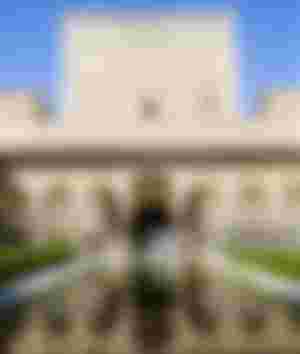
Comares Palace
Here is the reception room of the Ambassador. The length of each wall of this square hall is 12 meters. There is a throne just opposite the entrance.

The walls of the Hall of the Ambassador
The walls of the well-furnished hall are covered with tiles up to four feet high and have medallions, geometric designs and Arabic calligraphy. The floor is decorated with stucco work.

Calligraphy on the wall
The hall has nine double-sided windows on three sides. These help to keep the room lit as well as ventilated.
A large dome with a small chamber and a beehive-like design that is a unique example of Moorish stalactile architecture. These lattice-like designs of the domes are inspired by the events of the Prophet Muhammad (peace be upon him), where the spider in the cave helped the Prophet in the face of the Quraish attack.

The dome of the Hall of the Ambassador
Court of the Lion: Next to the Komares Palace is the Independent Palace Court of the Lion. The 35 meter long and 20 meter wide court was built by Nasrid ruler Muhammad V. It is surrounded by a well-appointed gallery with 124 marble arches. The fine gold, silver and copper carvings on the walls of the gallery will fascinate everyone.
The courtyard of the hall is covered with colorful tiles and the roof has a huge dome with elaborate geometric designs and stucco work.

Walls inlaid with artwork
One of the attractions of the Court of Lions is the marble stone sculptures of 12 lions connected to a complex water flow system. The existing drain fountain ponds in Al Hamra never let the temperature of the palace exceed 22 degrees Celsius.

Court of Lions
Portal Palace: There is a planned pond here hence it is also called the Court of Pond. The movement of goldfish in the pond would have created a different atmosphere.
There is a partal bush in the 42 meter long and 22 meter wide courtyard.

Partel Palace in front of the artificial reservoir
Opposite the pond is a separate Tower of Ladies for women which is reflected in the pond. It was built by King Muhammad III in 1302-1309. From here one can easily enjoy the beauty of Partel Gardens, Albizine and Generallife.
GeneralLife: The Nasrud rulers built GeneralLife on a hill opposite the Al Hamra Palace. The name GeneralLife originates from the Arabic word Jannat-al-Arifa. The Nasrid sultans used this garden house to rest.

Gardenhouse Generallife
This giant garden was full of ornamental flowers and in the middle of it was a water channel which divided the garden into two equal parts.
There are two rows of fountains in the drain. The idea of fountain garden has been taken from the paradise described in the Quran.
The Muslim rulers of the time did their utmost to make their palaces and gardens a piece of paradise in the heart of the world which still exists as a witness to their glorious history. These installations also remind us of the golden age of Muslim rule in Europe.
Attachment: From the architectural site Corniche
Photo: Getty Images

